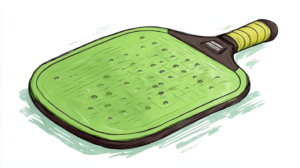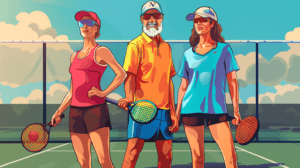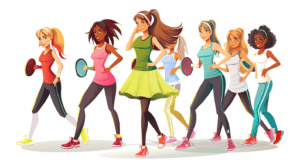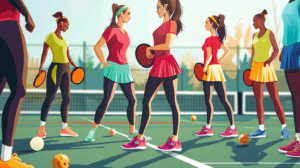Can You Play Pickleball On Grass?
Last updated

Venturing into the world of pickleball, a sport renowned for its dynamic and inclusive nature, we confront a compelling question: “Can you play pickleball on grass?” This query isn’t just about a change of playing surface; it’s a deeper exploration into the sport’s versatility.
As we navigate through this uncharted territory, we’ll discover how the traditional hardcourt game adapts to the unique challenges and delights of a grassy field.
Can Pickleball Be Played on Grass?
Yes, pickleball can be played on grass, though it presents unique challenges compared to traditional hard surfaces. Grass courts affect the bounce of pickleball balls and the game’s pace, requiring players to adapt their strategies for this softer, more uneven playing field.
In such settings, choosing the best outdoor pickleball balls, which are designed to perform well in various conditions, becomes crucial.
While grass is not the standard for pickleball, its use highlights the sport’s versatility and inclusiveness, echoing its badminton roots where grass courts are more common.
This adaptation of the game to grass surfaces exemplifies pickleball’s dynamic and accommodating nature, inviting players to experience the game in diverse environments.
Why Play Pickleball on Grass?
Many choose grass for pickleball due to space constraints or geographical limitations from standard courts. While grass might not offer the official pickleball experience, it can still be enjoyable for recreational play.
Playing on grass allows a more relaxed environment, perhaps even barefoot with a cocktail in hand, emphasizing the sport’s adaptability and inclusive nature.
Pickleball on Grass: A Slower Pace and Inconsistent Bounce
Unlike traditional courts, grass surfaces lack the smoothness required for the ball to zip around, leading to a slower-paced game.
The uneven grass can cause erratic bounces, adding an unpredictable element to the game, much like a baseball infielder anticipates on a grass and dirt field.
Equipment and Setup for Grass Pickleball
Transitioning pickleball to grass involves selecting the right gear and setting up the court. The essentials – net, paddles, and balls – must be adapted. A heavier ball is better for grass to reduce wind impact.
The net might need height adjustment for the grass surface. Setting up the court, with its 44×20 feet dimensions and non-volley zone, requires precision, using measuring tape or field chalk.
Choosing the Right Ball for Grass Courts
The ball in pickleball, akin to the heart in a body, dictates the game’s rhythm and pace. On grass, this crucial element undergoes a transformation. The ideal ball for grass courts, unlike its concrete counterpart, must possess a certain heft.
This ensures a good bounce, which is essential in maintaining the game’s spirit. The choice is not just a technical decision; it’s a nod to the game’s adaptability.
Michael Wanner, a seasoned player, notes that grass courts demand a ball that can counter the surface’s unpredictability. This choice is a delicate balance between maintaining the game’s integrity and embracing the grass’s playful unpredictability.
Selecting the Ideal Paddle for Grass Play
Selecting a paddle for grass pickleball is an exercise in precision and personal preference. The surface’s softer nature and the modified ball type call for a paddle that can generate sufficient power and control.
It’s not merely about transferring skills from hard courts to grass; it’s about redefining those skills. The ideal paddle becomes an extension of the player’s arm, a tool that adapts to the grass’s whimsy.
Selection is not just about the material or weight; it’s about how it complements the player’s style.
Setting Up a Portable Pickleball Court on Grass
Creating a pickleball court on grass is like setting up an impromptu stage for a play. It requires a blend of creativity and adherence to the game’s technical aspects.
The process begins with delineating the court’s boundaries, a task that demands precision and respect for the game’s rules. Portable nets, a staple in impromptu games, add a sense of authenticity to the setup.
Ensuring a level playing field on grass is essential, as it affects the game’s flow and player safety.
Pros and Cons of Grass Pickleball
Playing pickleball on grass is an exploration of the sport’s versatility. The grass surface offers a softer, more forgiving playing field, reducing the impact on players’ joints.
It’s an intimate dance with nature, where the softness of the grass complements the game’s energy. However, this comes with its set of challenges.
Grass courts can be uneven, affecting the ball’s bounce and trajectory and introducing an element of unpredictability.
Maintaining a grass court also demands more effort compared to its hardcourt cousins.
Exploring Different Playing Surfaces
Pickleball’s adaptability shines through its compatibility with various surfaces. Comparing grass with other characters like clay, hard, and carpet courts offers a glimpse into the game’s diverse nature.
Each surface brings its unique characteristics, influencing the game’s pace and style. Grass courts, with their softer and uneven nature, offer a more relaxed and unpredictable game.
In contrast, hard courts, like those made of concrete or asphalt, present a faster, more consistent play.
FAQ´S
Is it Safe to Play on Artificial Grass?
Playing on artificial turf is generally safe, offering consistent bounce and reduced maintenance. However, it lacks the natural cushioning of real grass, so players should be mindful of potential injuries.
What is the Best Floor for Pickleball?
The ideal pickleball surface depends on player preference and playing style. Hard courts offer speed and consistency, while grass and artificial turf provide a softer, more strategic game. Ultimately, the best surface is one that aligns with the player’s comfort and skill level.
Illegal Pickleball Serves Conclusion
Understanding and mastering legal serves in pickleball, like the volley, drop, and sidearm, while avoiding illegal serves such as missed serves, baseline faults, high tosses, and double hits, is key to enhancing one’s game.
It’s important to familiarize oneself with the five main serving rules: sticking to the serving order, ensuring serves land within designated court boundaries, mastering the underhand serve technique, keeping up with service rotation, and knowing the nuances of faults and reserves.
Unlike in tennis, bouncing the ball before serving is a no-go in pickleball, adding a layer of skill and quick reflexes to the game. Embracing these rules isn’t just about avoiding penalties; it’s about respecting the sport, fellow players, and the spirit of pickleball.







